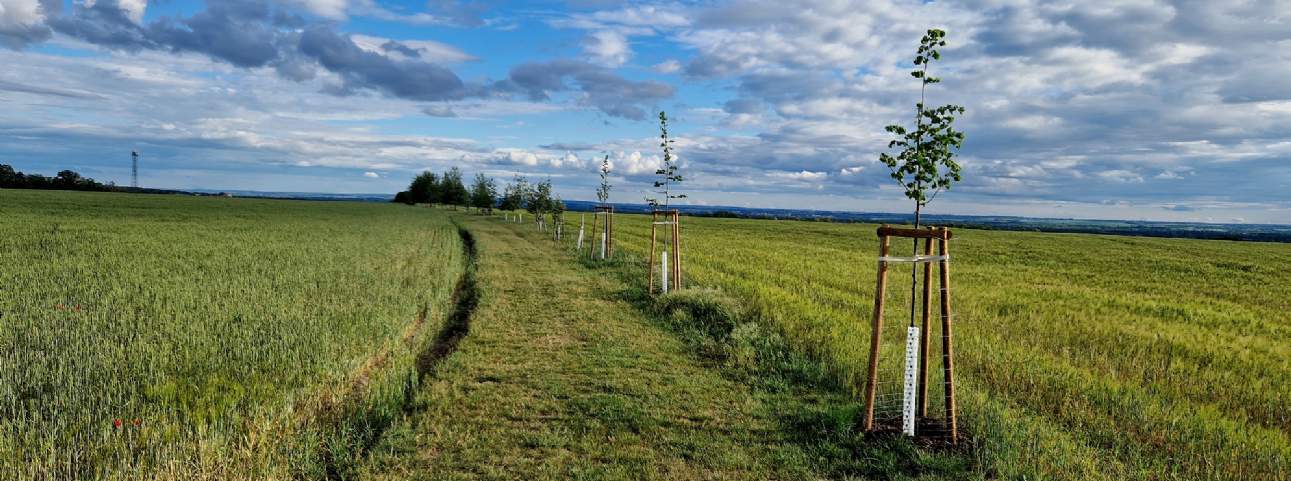In 2022 we suggested investment was still needed to make agroforestry mainstream in the UK, and earlier this year the government announced a new option for agroforestry would be available in England through the Sustainable Farming Incentive (SFI) scheme.
Today, there are many examples where agroforestry is working. The Soil Association has a plethora of information, which is regularly updated; as well as an ambassador programme, and a regional network of agroforestry contacts.
Our In plain English: Agroforestry blog defines agroforestry as a blend of farming and forestry, where trees and land are managed together. In a world where we are looking for more intense integration of the demands on land, there is no surprise that agroforestry is gaining attention.
Agroecological farming
Our colleague, Savills researcher Nicola Buckingham, recently visited an agroforestry site – Wood Advent Farm on Exmoor. The 450-acre (182-hectare) site was split in half to service broadleaf woodland creation, conservation and agroforestry alongside other food production and environmental strategies. With around 1,000 trees in the ground, and a further 3,000 in the pipeline, the site owners referred to agroforestry as one of a number of different strategies within their wider regenerative and organic practices – agroecological farming.
Aims of the enterprise
The agroforestry consists of apple, walnut, hazel and chestnut with cattle mob grazing between the trees, ideally for no more than three days in a year to promote biodiversity both below and above ground, or in rows within arable fields producing heritage and population grains. The produce from the trees and the rest of the farm is sold online and through local farmers markets, regional grain networks and London markets. There are four main aims:
- To promote soil health
- To mitigate climate change
- To restore biodiversity
- To produce high quality nutritious food
The bigger the sapling the better
However, for some, this innovative mechanism of carbon storing and crop production still feels in its infancy with real data lacking.
Abi Reader, dairy and beef farmer in the Vale of Glamorgan, has taken the bull by the horns and put a trial in place on her 800-acre (324-hectare) dairy farm. With the family farm being part owned and part tenanted, the first question was where to place the trial to be confident of the long-term land tenure and to ensure highly productive land was not compromised. Abi settled on an awkward field corner and got started with planting 3,800 trees per hectare across the 1.6-hectare site. Two-thirds of the trees – a mix of cherry, aspen, willow and small leaf lime – were planted in the autumn and the remainder in the spring. A lesson learnt was the bigger the sapling planted the better, and autumn was the best season.
The really interesting part in Abi’s trial is the Sida novel crop growing in between the lines of trees. Originating from Poland, this maize-like crop has outstanding properties on paper. It is a super absorber of carbon, high in protein for animal feed, and has a good dry matter percentage making it extremely digestible for the dairy herd – the benefit being a reduction of bought-in protein feed for the cattle. In addition the environment is protected as biochar will be created which Abi plans to use in the slurry to reduce ammonia emissions.
What is biochar?
Biochar can capture and adsorb ammonium nitrogen. Results from trials show the addition of 1-3% biochar can reduce emissions by 10-20% which in turn increases the nitrogen content per m3 of the slurry, in some trials by up to 40%, thus creating a higher fertiliser value too.
Abi advises working with the Woodland Trust and foresters to see whether agroforestry can be successfully and profitably integrated into the farming business. Certainly, there is growing evidence to show that a symbiotic approach to agriculture and land use will be the way ahead for many enterprises, with benefits not only for the environment but the bottom line too.
Further information
Contact Kelly Hewson-Fisher

.jpg)
.jpg)
.jpg)






